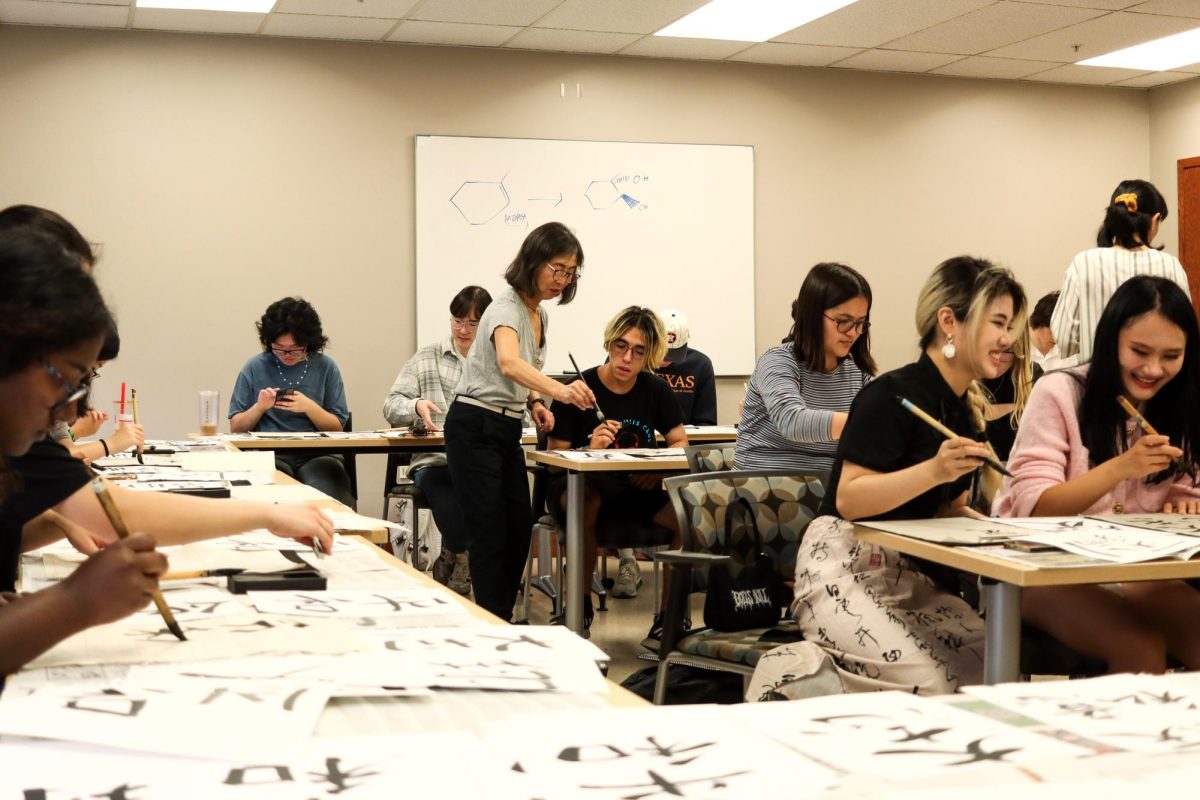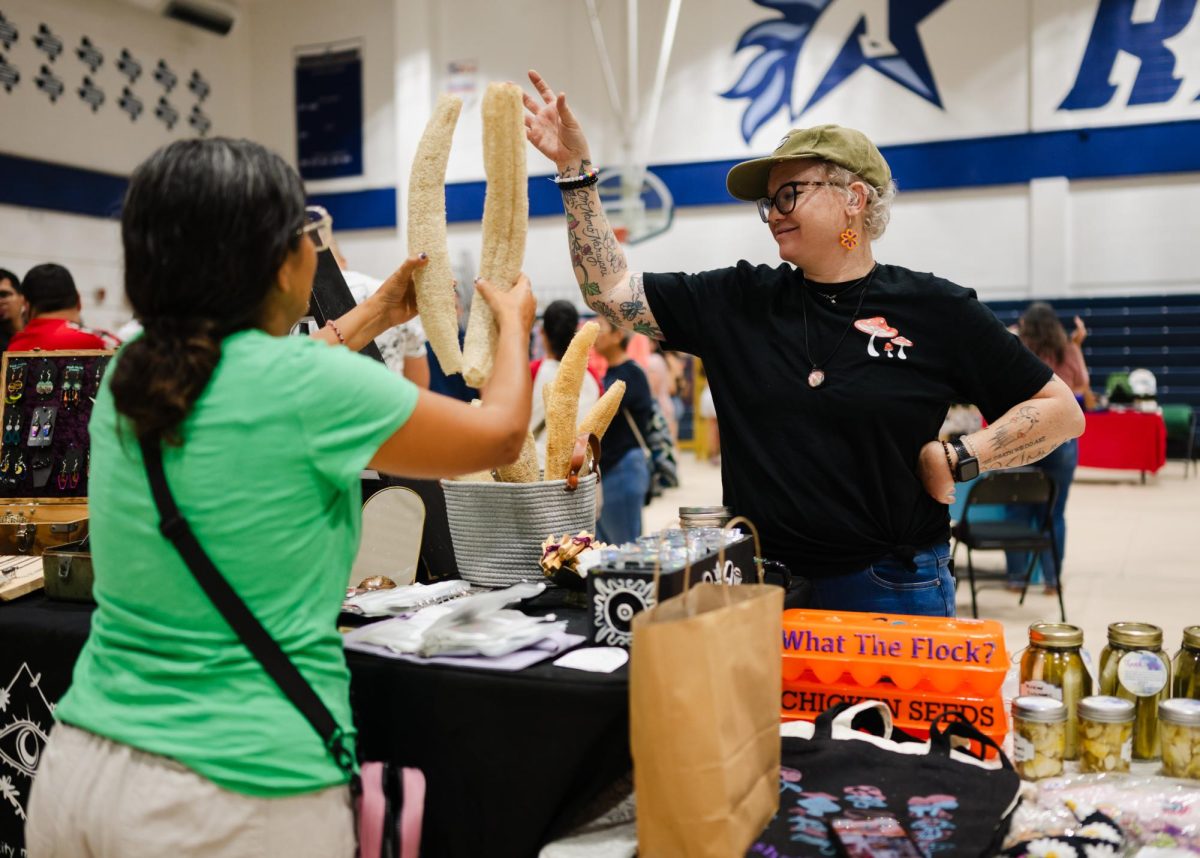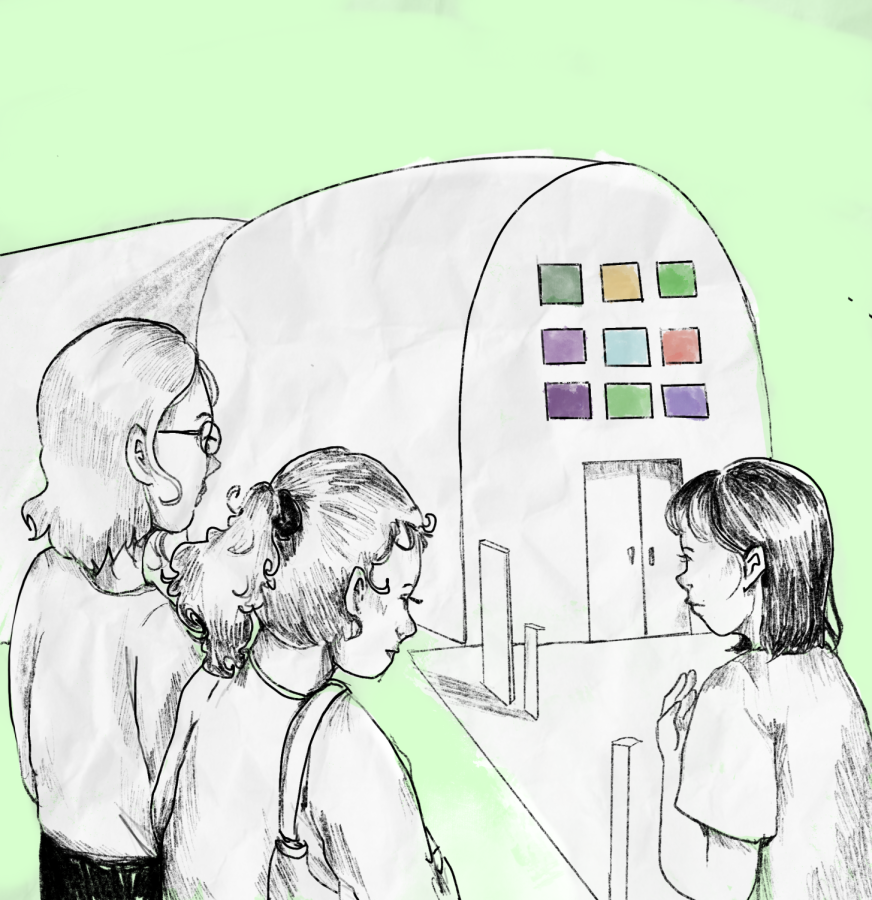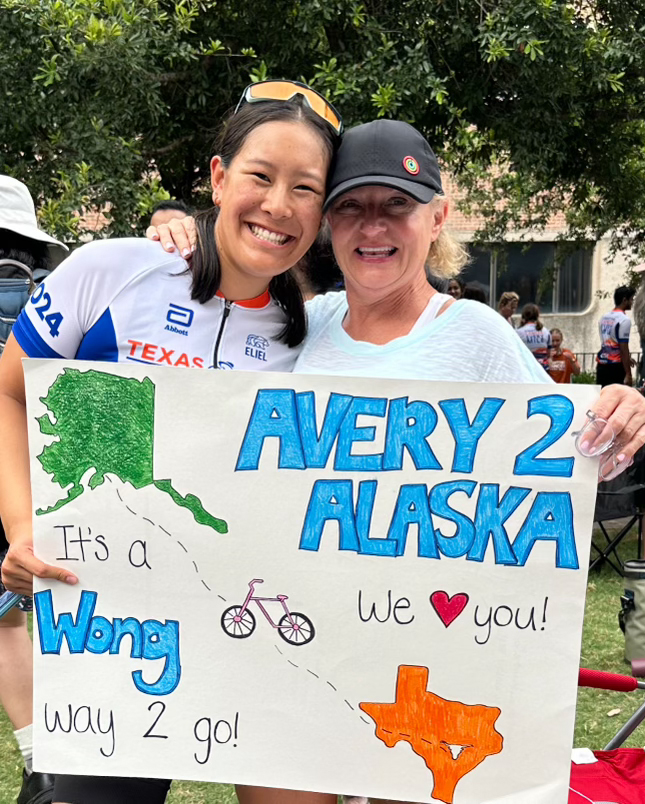In an age of digitalization, Tomoko Hetherington firmly believes a brush conveys a message more profoundly than a keyboard can. The local author holds a deep appreciation for hand-written works and hopes to spread awareness of Japanese culture through her art.
This past Tuesday, the Department of Asian Studies invited Hetherington to teach a lesson in calligraphy. The free event provided UT students with an opportunity to immerse themselves in the practice of Japanese calligraphy. Hetherington said her inspiration for writing developed from her travels and observations of the world around her.
“I love to write,” Hetherington said. “My community that I traveled to (in) Greece and Africa, I wrote about (it in my) diary — illustrated it (too).”
Hetherington expressed her enjoyment of coming to campus, citing the younger generation’s willingness to learn. Aoife Hopkins, an attendee of the event, praised Hetherington’s talent.
“She did a really good job of teaching us the basics because she was very precise with the pressure and the stroke of which you should hold the brush,” the public relations junior said. “Her explanation was very brief and concise for a topic so complicated.”
Throughout the lesson, Junko Hatanaka, an assistant professor of instruction who helped facilitate the event, emphasized the importance of neat handwriting.
“Good handwriting is very important … because some people judge when (they) see the handwriting is a bit sloppy — (it implies) this person may be not organized,” Hatanaka said. “If you see very nice and beautiful handwriting, people take the person as a very intelligent person, so in Japan good handwriting is very important to survive in society.”
Students practiced holding the brush and performing basic strokes on scratch paper before advancing to higher-quality paper for their final pieces, Hopkins said.
“I appreciate how the instructors went around the room complimenting people because it can be intimidating, trying to learn a new form of art in a language that you don’t know that well,” Hopkins said. “I thought they did a very good job teaching accurate information about (the) Japanese language, but also celebrating people’s curiosity rather than being strict.”
Hetherington concluded the lesson by expressing her gratitude for the attendees’ participation.
“What I thought was very admirable was that the professors … hung up their favorite calligraphy of students … to celebrate the bravery of students putting themselves out there to do calligraphy in a language that they might not be familiar with,” Hopkins said. “It was wonderful that … they made sure that everyone’s calligraphy was showcased, making it a fun lesson.”
Hetherington said she mainly wanted to encourage students to explore the unknown.
“(It’s good to) explore something new or enjoy some new experiences,” Hetherington said. “Then new people will (be aware) of different cultures.”
Hopkins said the event highlighted the importance of celebrating diverse cultures.
“Opening yourself up, there’s always going to be a Japanese person on campus who is happy to share their culture — and this isn’t just the Japanese population … but people are always honored to share their cultures,” Hopkins said. “Curiosity has always existed. Come out of your shell if you ever want to learn more about the world.”















